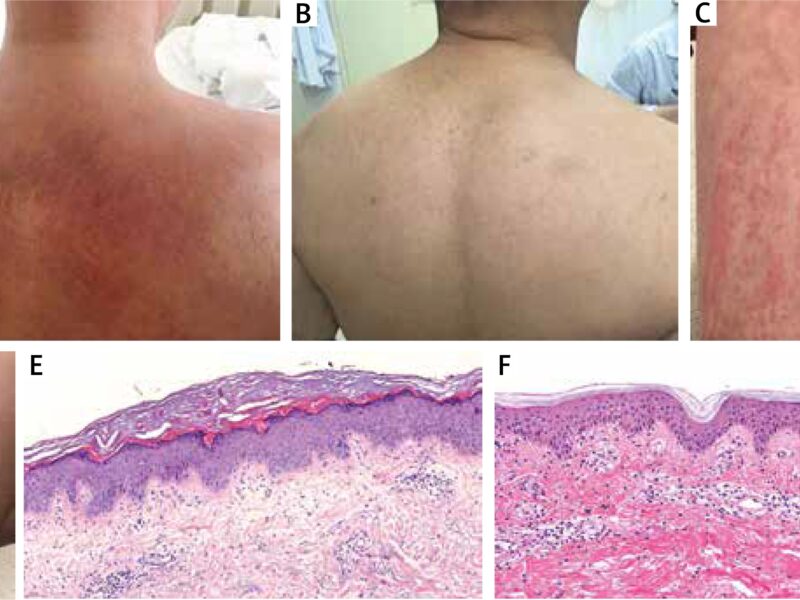Adult Still’s Disease (ASD), also known as adult-onset Still’s disease, is a rare systemic inflammatory disorder that poses diagnostic challenges and significantly impacts the lives of affected individuals. Characterized by recurrent fevers, rash, arthritis, and multi-organ involvement, ASD shares similarities with its pediatric counterpart but presents distinct challenges in adults due to its varied clinical manifestations and lack of specific diagnostic criteria.
In this essay, we will delve into the complexities of Adult Still’s Disease, exploring its clinical features, diagnostic considerations, treatment approaches, and the impact it has on the lives of those affected.
Clinical Features
Adult Still’s Disease manifests with a spectrum of clinical features that can vary widely among affected individuals. The hallmark symptom of ASD is recurrent spiking fevers, often exceeding 39°C (102.2°F), which typically occur daily and are accompanied by systemic symptoms such as fatigue, malaise, and weight loss.
These fevers may be accompanied by a characteristic rash, known as salmon-colored maculopapular rash, which often appears during fever episodes and may migrate across the body.
In addition to fevers and rash, arthritis is a common feature of ASD, affecting approximately 70-90% of individuals. The arthritis of ASD is typically non-erosive and involves multiple joints, presenting as transient or migratory polyarthritis with morning stiffness and swelling.
Other systemic manifestations of ASD may include sore throat, lymphadenopathy, hepatosplenomegaly, serositis (inflammation of serous membranes), and involvement of various organs such as the heart, lungs, liver, and kidneys.
Diagnostic Considerations

Diagnosing Adult Still’s Disease can be challenging due to its heterogeneous presentation and overlap with other inflammatory conditions. The diagnosis of ASD is primarily clinical, based on the presence of characteristic symptoms such as recurrent fevers, rash, and arthritis, along with the exclusion of other potential causes.
Laboratory findings in ASD often include elevated inflammatory markers such as C-reactive protein (CRP) and erythrocyte sedimentation rate (ESR), as well as leukocytosis and elevated ferritin levels, which may aid in supporting the diagnosis.
However, it is essential to rule out other infectious, neoplastic, and autoimmune conditions that can mimic the clinical features of ASD, including infections (such as viral or bacterial), malignancies (such as lymphoma or leukaemia), and other rheumatic diseases (such as rheumatoid arthritis or systemic lupus erythematosus).
Imaging studies, such as chest X-rays, echocardiography, and magnetic resonance imaging (MRI), may be performed to evaluate for evidence of organ involvement and complications.
Treatment Approaches
The management of Adult Still’s Disease aims to control symptoms, prevent disease flares, and minimize long-term complications. Treatment strategies often involve a combination of pharmacological interventions and supportive care measures tailored to the individual’s clinical presentation and disease severity. Nonsteroidal anti-inflammatory drugs (NSAIDs) are commonly used to alleviate fever, pain, and inflammation in ASD, providing symptomatic relief during acute flares.
In cases of more severe or refractory disease, corticosteroids such as prednisone may be prescribed to suppress inflammation and modulate the immune response. However, long-term use of corticosteroids is associated with significant adverse effects, and efforts should be made to taper and discontinue them whenever possible.
Disease-modifying antirheumatic drugs (DMARDs) such as methotrexate, sulfasalazine, and biologic agents (such as interleukin-1 inhibitors or tumour necrosis factor inhibitors) may be considered for individuals with persistent or recurrent disease activity despite initial therapy.
Supportive care measures play a crucial role in managing the systemic manifestations and complications of ASD. This may include rest during febrile episodes, adequate hydration, physical therapy to maintain joint mobility and function, and regular monitoring for potential complications such as cardiac involvement or macrophage activation syndrome (MAS), a life-threatening complication characterized by excessive immune activation and cytokine release.
Impact on Quality of Life
Adult Still’s Disease can have a significant impact on the physical, emotional, and social well-being of affected individuals, as well as their families and caregivers. The unpredictable nature of the disease, characterized by recurrent flares and remissions, can disrupt daily activities, work, and social interactions, leading to feelings of frustration, anxiety, and isolation.
Chronic pain, fatigue, and physical limitations imposed by arthritis and systemic symptoms can further exacerbate the burden of illness and diminish the quality of life.
Moreover, the rarity of ASD and the lack of awareness among healthcare providers and the general public can contribute to delays in diagnosis, misdiagnosis, and inadequate access to specialized care and support services.
Individuals with ASD may face challenges in finding knowledgeable healthcare providers, accessing appropriate treatments, and navigating the complexities of managing a chronic and often invisible illness.
Support Resources
Despite the challenges posed by Adult Still’s Disease, individuals affected by ASD can find solace, support, and empowerment through various support resources and advocacy organizations dedicated to rare autoimmune and inflammatory conditions.
Patient advocacy organizations, such as the American Autoimmune Related Diseases Association (AARDA) and the Rare Diseases Clinical Research Network (RDCRN), provide educational resources, support services, and opportunities for networking and community building.
Online support groups and social media platforms offer virtual communities where individuals with ASD can connect with others, share experiences, exchange information and advice, and find solidarity and understanding from peers worldwide. These platforms serve as invaluable sources of emotional support, validation, and empowerment, helping individuals navigate the challenges of living with a rare and often misunderstood condition.
Conclusion
Adult Still’s Disease is a rare and complex systemic inflammatory disorder characterized by recurrent fevers, rash, arthritis, and multi-organ involvement. Despite its rarity, ASD can have a profound impact on the lives of affected individuals, affecting physical health, emotional well-being, and quality of life.
Early recognition, accurate diagnosis, and timely intervention are essential for effectively managing ASD and minimizing its impact on long-term outcomes. Through a multidisciplinary approach that combines pharmacological interventions, supportive care measures, and access to support resources, individuals with ASD can find hope, resilience, and empowerment in their journey towards better health and well-being.










